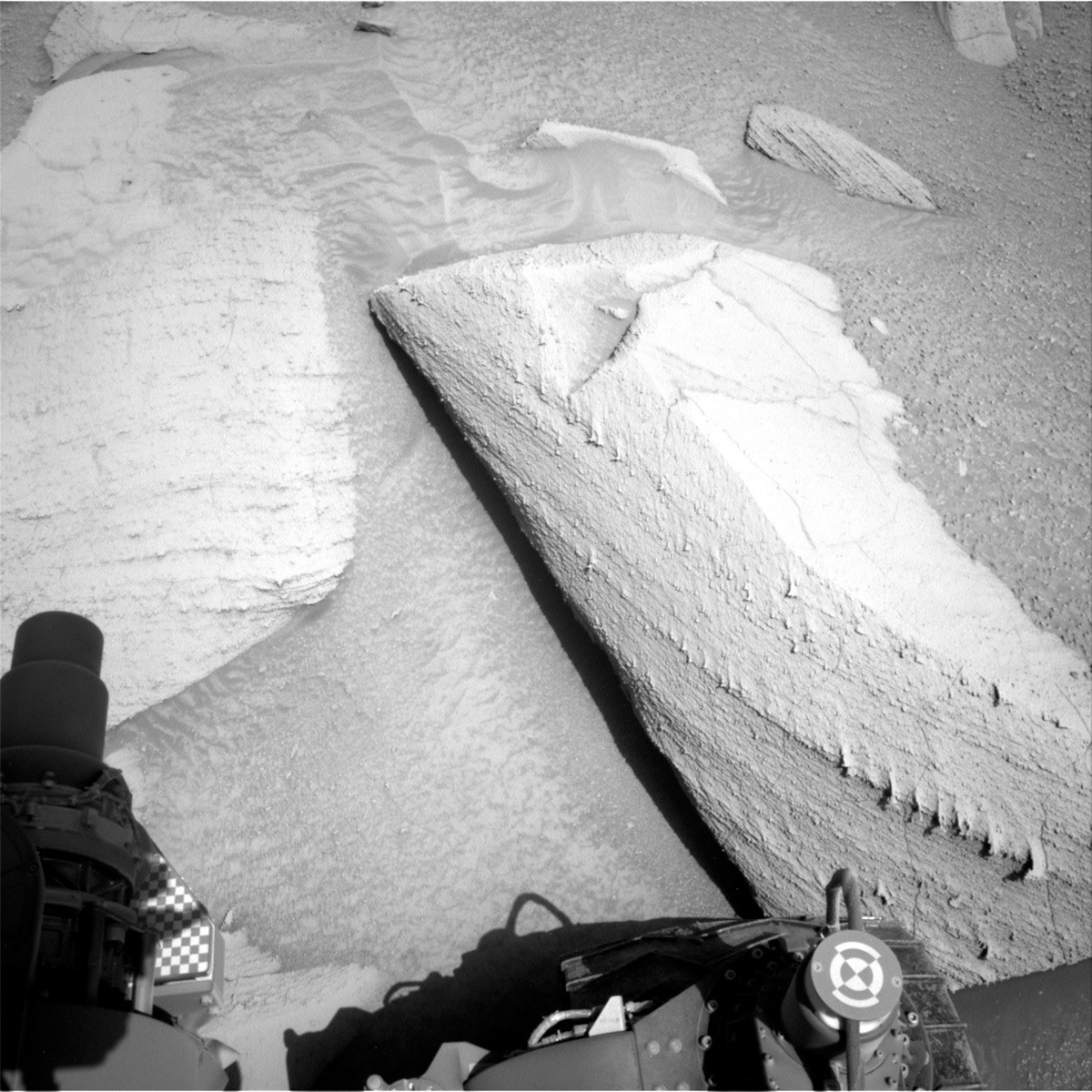2 min read

After a short bump in yesterday’s plan to get to a better workspace, Curiosity is poised to get a detailed look at the next stratigraphic unit in this small canyon. Since leaving the Amapari Marker Band, we’ve been acquiring a lot of great contact science targets to look for changes in the chemistry. This requires sweeping away the dust with the Dust Removal Tool, and then using APXS, MAHLI, ChemCam, and Mastcam multispectral to get a detailed look at the grain size and composition of different units as we climb through the valley.
Today’s two-sol plan kicks off with several Mastcam mosaics to investigate the local stratigraphy, as well as the resistant nodules in these rocks. Some of these ventifacted nodules (shaped by the wind) are sticking out in positive relief with morphologies that have jokingly been compared to fins or “shark’s teeth” (seen in the lower right corner of the above Navcam image). We would love to take a bite out of these rocks to see what they’re made of! But we’ll have to rely on our instruments for that. So we’ll clear away a fresh patch of bedrock with the DRT at a target named “Cupixi” (the block on the left in the above image), followed by MAHLI imaging, and then use APXS and ChemCam to look at the composition. Mastcam will also acquire a multispectral observation at “Cupixi.” In addition to the observations at Cupixi, ChemCam will investigate a target named “Pico do Trocoa” to look at these nodules in more detail, and MAHLI will acquire a dog’s eye mosaic to assess the grain size and stratification in a layer forming the “sharks’s teeth.” The plan also includes several environmental monitoring observations to assess dust in the atmosphere and to search for clouds and dust devils. On the second sol Curiosity will complete a drive to climb higher in this canyon and figure out what other fascinating units lie above.
Written by Lauren Edgar, Planetary Geologist at USGS Astrogeology Science Center







